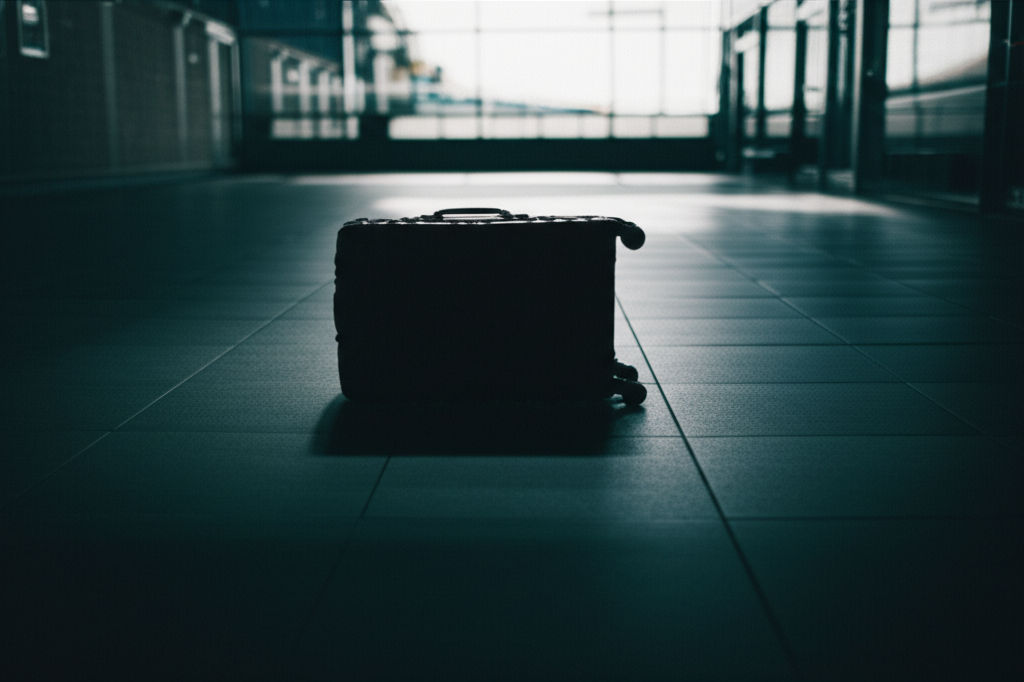How far a sneeze can travel
Ikhsan Rizki

Photo: Discover the surprising science of a sneeze! Learn how far particles truly travel and why understanding its reach is crucial for public health.
A single sneeze, often dismissed as a minor bodily function, is, in reality, a powerful expulsion of air and particles that can travel surprisingly far. Understanding how far a sneeze can travel is crucial for appreciating its role in public health and the importance of good hygiene. Far from being confined to a small personal bubble, the invisible aftermath of a sneeze can impact those around you and even linger in the environment.
The Explosive Science Behind a Sneeze
A sneeze is your body's rapid-fire defense mechanism, designed to clear irritants from your nasal passages. But it's far more forceful than most people realize. When you sneeze, your body expels air, mucus, and a multitude of tiny droplets from your nose and mouth.
Sneeze Velocity: Faster Than You Think?
The speed at which a sneeze erupts has been a subject of varying scientific findings. While some popular accounts suggest speeds of up to 100 miles per hour (about 160 km/h), more recent and direct measurements indicate a somewhat lower, though still significant, velocity. Studies using high-speed imaging have found that the highest velocities of a sneeze can be around 10 miles per hour (approximately 4.5 meters per second or 16 km/h). Other research suggests a maximum sneeze airflow velocity of about 15.9 m/s. Regardless of the exact top speed, the initial force is considerable, propelling a complex mix of particles into the air.
The Anatomy of a Sneeze Cloud
When you sneeze, it's not just a simple spray of liquid. Researchers have identified that sneezes create a "multiphase turbulent buoyant cloud" – an invisible gas cloud that traps and carries smaller droplets much farther than they would otherwise travel. This cloud acts like a protective envelope, preventing these tiny particles from immediately falling to the ground.
How Far a Sneeze Can Travel: Unpacking the Distance
So, just how far can a sneeze travel? The answer depends on several factors, particularly the size of the expelled droplets and environmental conditions.
Initial Droplet Spread
Larger, more visible droplets from a sneeze tend to settle relatively quickly, typically within 6 to 8 feet (approximately 1.8 to 2.4 meters) of the person who sneezed. This is why social distancing guidelines often recommend maintaining a distance of at least 6 feet.
The Far-Reaching Aerosols
However, the smaller, microscopic particles (aerosols), which are often less than 5 micrometers in size, are the real long-distance travelers. These tiny particles can remain suspended within the turbulent gas cloud and journey much farther.
According to studies from the Massachusetts Institute of Technology (MIT), these small droplets can travel between 19 and 26 feet (approximately 5.8 to 8 meters) in controlled laboratory environments. Some research even suggests that under specific conditions, smaller particles suspended in the gas bubble can travel as far as 200 feet, potentially finding their way into ventilation systems. Other findings indicate sneeze droplets can travel as far as 30 feet or 9 meters, depending on the sneeze's intensity.
Current research indicates that while extreme distances are scientifically possible under specific conditions (like particular air currents and humidity levels), typical sneezes in normal environments generally spread droplets within 6-10 feet (1.8-3 meters).
Factors Influencing Sneeze Travel Distance
Beyond the initial force, several environmental and physiological factors can influence how far a sneeze can travel:
- Droplet Size: Smaller droplets remain airborne longer and travel further.
- Air Currents and Ventilation: Air movement, whether from open windows, air conditioning, or general drafts, can carry airborne particles much farther. Poorly ventilated indoor spaces can lead to a higher concentration of airborne pathogens.
- Humidity: Lower humidity can cause water from aerosols to evaporate, making them shrink and stay airborne longer, thus traveling farther.
- Obstacles: Physical barriers can interrupt the travel of sneeze droplets.
- Sneeze Strength: A more forceful sneeze will naturally propel particles further.
Why Understanding Sneeze Distance Matters
The ability of sneezes to propel germs over significant distances has critical implications for public health. A single sneeze can release around 100,000 contagious germs, including viruses like influenza, respiratory syncytial virus (RSV), adenoviruses (which cause the common cold), and bacteria such as Streptococcus pneumoniae. These germs can remain suspended in the air for minutes to hours, with some bacteria staying viable for up to 45 minutes.
This means that even if you're not directly in the path of the initial spray, you could still inhale infectious particles that have traveled or lingered in the air. This understanding underscores the importance of proper hygiene to prevent the spread of respiratory illnesses.
Practical Steps to Minimize Germ Spread
Knowing how far a sneeze can travel empowers us to take proactive steps to protect ourselves and others:
- Cover Your Coughs and Sneezes: Always cover your mouth and nose with a tissue when you cough or sneeze. If a tissue isn't available, use the crook of your elbow. Avoid sneezing into your hands, as this can easily transfer germs to surfaces and other people.
- Dispose of Tissues Properly: Discard used tissues immediately into a waste basket.
- Practice Hand Hygiene: Wash your hands frequently and thoroughly with soap and water for at least 20 seconds, especially after coughing or sneezing. If soap and water are not available, use an alcohol-based hand sanitizer containing at least 60% alcohol.
- Avoid Touching Your Face: Keep your hands away from your eyes, nose, and mouth to prevent transferring germs.
- Maintain Distance and Stay Home When Sick: When possible, avoid close contact with others, especially if you or they are experiencing respiratory symptoms. Staying home when unwell is one of the most effective ways to prevent illness spread.
- Improve Ventilation: In indoor spaces, good airflow and ventilation can help disperse infectious particles more quickly.
Conclusion
The journey of a sneeze is far more extensive and complex than a simple "bless you" might suggest. From its high-speed expulsion to the lingering presence of microscopic aerosols, a sneeze can propel infectious particles across a room and keep them airborne for minutes or even hours. By understanding how far a sneeze can travel and the science behind it, we can all become more conscious of our actions and diligently practice respiratory hygiene. These simple yet effective habits are our best defense in preventing the spread of illnesses and fostering healthier communities.
What are your go-to tips for staying healthy during cold and flu season? Share your thoughts in the comments below!
Frequently Asked Questions
Q1: How fast does a sneeze travel?
A1: While popular belief often cites speeds of up to 100 miles per hour, more precise scientific measurements suggest the actual velocity of a sneeze is closer to 10 miles per hour (approximately 4.5 meters per second or 16 km/h).
Q2: Can sneeze germs stay in the air for a long time?
A2: Yes, particularly smaller particles (aerosols) from a sneeze can remain suspended in the air for minutes to several hours, especially in poorly ventilated environments. Some bacteria can even remain viable for up to 45 minutes.
Q3: What's the difference between sneeze droplets and aerosols?
A3: Droplets are larger liquid particles that tend to fall quickly to surfaces, typically within 6-8 feet. Aerosols are much smaller, lighter particles that can remain suspended in the air for much longer and travel greater distances within the invisible gas cloud expelled during a sneeze.
Q4: Does covering your mouth really help stop germs from spreading?
A4: Absolutely. Covering your mouth and nose with a tissue or your elbow significantly reduces the distance and spread of sneeze droplets and aerosols, preventing germs from reaching others or contaminating surfaces. Immediately washing your hands afterward is also crucial.
Business
View All
August 30, 2025
Cast of Mind Your Business Show TodayDiscover the stars of Bounce TV's "Mind Your Business"! Get to know the cast behind the laughs in this hit family comedy series.
Ikhsan Rizki

November 14, 2025
When to Hire a Business Litigation LawyerFacing business disputes? Discover when to hire a business litigation lawyer to safeguard your company's stability, reputation, and finances.
Ikhsan Rizki

October 13, 2025
Real Estate Business Cards That WorkReal estate business cards still work! Learn to create powerful cards that stand out, make connections & boost your real estate business.
Ikhsan Rizki

September 17, 2025
BA A380 Business Class Flight ReviewConsidering BA A380 Business Class? This review covers everything from lounges to seat comfort, helping you decide if Club World delivers a premium flight.
Ikhsan Rizki

September 14, 2025
What Is a Firm in Business TermsConfused by "firm" in business? This article clarifies what a firm is, its types, and how it differs from a company. Master this key term!
Ikhsan Rizki

October 2, 2025
Utah SOS Business Search HelpUnlock crucial business info in Utah! Learn how to use the Utah SOS Business Search for name availability, due diligence, status checks & more.
Ikhsan Rizki
Economy
View AllIs Singapore Airlines Premium Economy worth the upgrade? Dive into the real experience, from priority perks to seat comfort, and decide for your next journey.
Ikhsan Rizki
Is the Chevy Colorado fuel-efficient? Get 2023-2025 MPG ratings, real-world factors, and tips to maximize gas mileage. Make a smart truck choice.
Ikhsan Rizki
Save big on Las Vegas Airport parking! This guide covers LAS economy parking, locations, rates & shuttles for a stress-free, budget-friendly trip.
Ikhsan Rizki
Discover the profound economic impact of the Baby Boomers. Learn how this massive generation shaped consumer trends, labor, and today's economy.
Ikhsan Rizki
Dreaming of Daytona Beach on a budget? The Atlantic Economy Inn offers affordable stays steps from the beach with a pool & free WiFi. Your savvy guide!
Ikhsan Rizki
What is the Low Altitude Economy? Explore this new frontier where drones & air taxis revolutionize delivery, travel, and more above us.
Ikhsan Rizki
Education
View AllSeeking top PreK-8 education? Forest Lake Education Center (FLEC) offers academic excellence, Christian values & holistic growth.
Read MoreNavigate Nicholas County Board of Education updates easily! This guide empowers parents, students & the community to stay informed, advocate, and engage for sch...
Read MoreUnlock your potential in pharmacy! Discover Pharmacy Times CE, your accredited guide to staying current, meeting licensure, and enhancing your practice.
Read MoreUnlock your healthcare career with Mercy Hospital's diverse education programs. From foundational training to advanced residencies, find your path to success.
Read MoreConsidering a pharmacy career? Learn the exact educational journey, from prerequisite courses to the Pharm.D. degree, to become a vital healthcare expert.
Read MoreUnlock the potential of specialized learning at North Education Center. This guide explores tailored programs and a nurturing environment for unique student nee...
Read MoreHealth
View All
November 26, 2025
What Harris Health Smith Clinic OffersSeeking comprehensive healthcare in Houston? Harris Health Smith Clinic provides accessible primary care, specialty access, and patient-centered wellness.
Ikhsan Rizki

September 1, 2025
Start Your Career at Denver HealthYour guide to a fulfilling healthcare career at Denver Health. Discover diverse opportunities, benefits, and how to apply to a leading system.
Ikhsan Rizki

August 22, 2025
Careers at Cone Health Right NowExplore careers at Cone Health! Discover a supportive culture, great benefits, and make a real impact in healthcare. Join a Great Place to Work®.
Ikhsan Rizki

November 5, 2025
Orlando Health Patient Portal InfoTake control of your health! Discover the Orlando Health Patient Portal (MyChart) for easy access to records, appointments & secure messaging.
Ikhsan Rizki

August 9, 2025
In Good Health Sandwich Menu PicksTransform your sandwich into a healthy meal! Learn smart choices for bread, lean protein, and veggies to fuel your body without guilt.
Ikhsan Rizki

November 7, 2025
Primary Health Medical Group Near YouSimplify finding your ideal Primary Health Medical Group. Our guide helps you choose a trusted healthcare partner for comprehensive, long-term well-being.
Ikhsan Rizki
Popular Articles
View All
1
2
3
4
5
6
7
8
9
10
Lifestyle
View All
November 12, 2025
What is lifestyle RP and who plays it
Live a second life! Explore Lifestyle RP, an immersive digital world of realistic characters, social interaction, and unique storytelling. Get started here.

October 28, 2025
What a Lifestyle Lift Really Costs
Considering a mini facelift? Learn the *true* cost beyond the sticker price. Understand all factors for an informed decision on your rejuvenated look.

September 9, 2025
Skyn Condom Size Guide From Lifestyles
Unlock comfort & safety! Our Skyn condom size guide helps you find your perfect fit for enhanced pleasure and peace of mind. Non-latex options too.

August 5, 2025
Beauty and skincare lifestyle tips that work
Unlock radiant skin! Discover proven beauty & skincare lifestyle tips that work from the inside out. Cut through the noise for a natural glow.

November 20, 2025
Best Medical Fields for Lifestyle
Achieve work-life balance in medicine! This guide reveals top medical fields with predictable hours, fewer emergencies, and lower stress for a fulfilling career...

September 20, 2025
Why Barefoot Lifestyle Is Gaining Fans
Reconnect with your natural foundation. Explore the science behind why barefoot living improves foot strength, balance, and overall health.

August 18, 2025
Inside Soul Lifestyle Apartments
Soul Lifestyle Apartments: Redefine urban living with top amenities, vibrant community, and unmatched convenience. Find your ideal modern home.

August 9, 2025
DnD Lifestyle Ideas to Try
Level up your reality! Discover practical, fun ways to infuse your everyday life with D&D magic, from home decor to fashion. Embrace the adventure!
Sports





Travel
View All
November 19, 2025
Where to Travel in August Top Destinations
Where to Travel in August: Your Ultimate Guide to Top Destinations August often presents a unique travel dilemma. On one hand, it's peak summer for many, brimmi...

November 13, 2025
RDR2 fast travel tips and tricks
Tired of long rides in RDR2? Unlock all fast travel methods, from camp upgrades to stagecoaches, and save time exploring the Wild West!

August 22, 2025
Belgium Strikes Affecting Air Travel
Belgian strikes impacting air travel? Discover why & how to navigate disruptions, cancellations, and delays to protect your travel plans.

September 23, 2025
Filling Out a Constructed Travel Worksheet
Unlock stress-free travel! Learn to build a powerful constructed travel worksheet to organize bookings, budgets, and itineraries for seamless adventures.

September 3, 2025
French Rail Strike Travel Advice
Don't let French rail strikes derail your travel plans! Get expert advice to confidently navigate disruptions, stay informed, and enjoy your journey.

August 24, 2025
Breathtaking Travel Destinations Greece
Explore Greece's top travel destinations! From iconic islands like Santorini to majestic mainland sites, discover ancient history, beaches & culture.

















